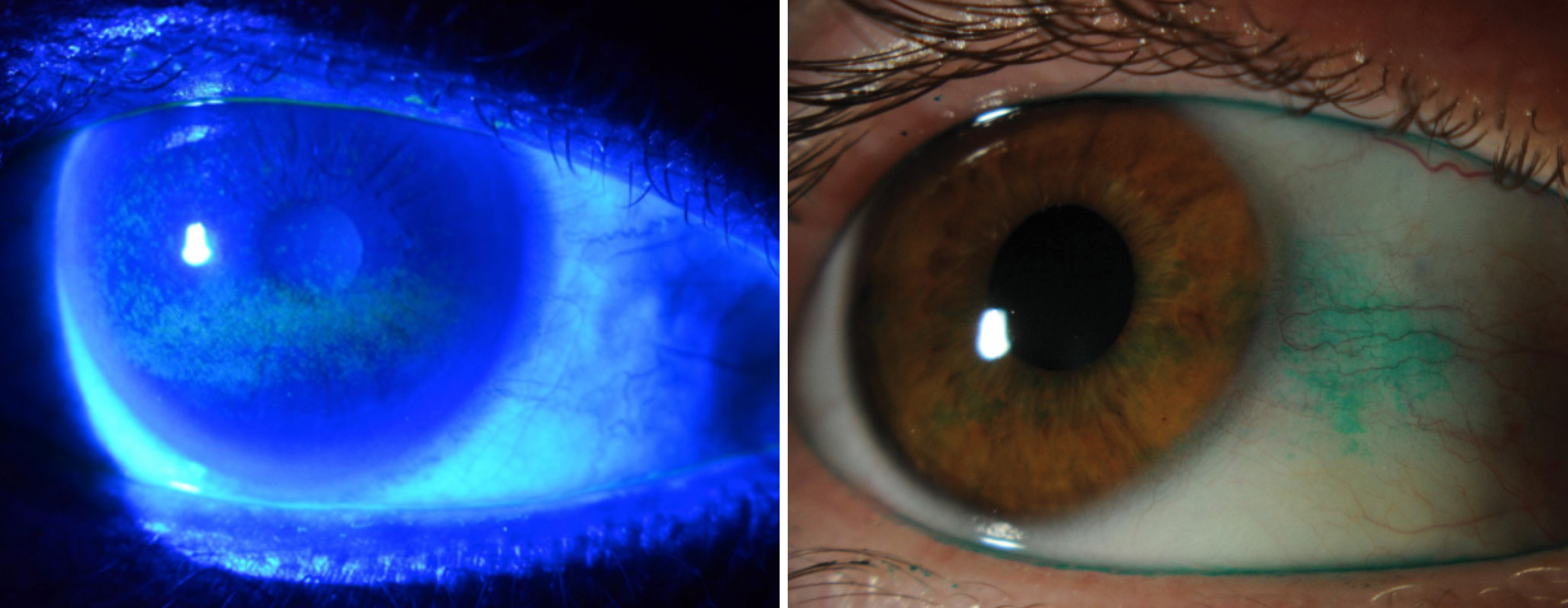 |
| Clinicians will get more true-to-life assessments of presumed dry eye by using a range of tests, with special attention to staining patterns. Photo: W.R. Buie, OD; Rebecca Rojas, OD. Click images to enlarge. |
Dry eye disease can be difficult to diagnose accurately. Many of the tests require significant clinician time and skill to subjectively interpret and synthesize, and as a result, it’s often impractical to conduct the full battery of testing, leaving clinicians to pick and choose which they’ll use.
The TFOS DEWS II report put forth a set of standard test procedures for diagnosis. To establish the utility of each diagnostic measure in the report, one researcher (Eric Papas, MCOptom, PhD) calculated the probability of a correct dry eye diagnosis given a positive result for a range of standard tests, using sensitivities and specificities gathered from a literature review. His analysis showed that at an assumed prevalence of 11.6%, corneal staining had the highest probability of a correct diagnosis (0.28), and the Ocular Surface Disease Index (OSDI) had the lowest probability (0.14).
Dr. Papas also found that the best combination of symptoms with a single test of tear film homeostasis was the five-item Dry Eye Questionnaire (DEQ5) + corneal staining (0.42). The worst was OSDI + tear film break-up time (TBUT) results (0.23). Simultaneous observation of both conjunctival and corneal staining was associated with a probability of 0.49.
Additionally, he reported that there was a greater chance of a correct diagnosis with a higher number of positive tests, up to a maximum of 0.9 when DEQ5, conjunctival and corneal staining, osmolarity and TBUT were positive.
He concluded, in his article for Contact Lens & Anterior Eye, that corneal staining is the single most useful test but added that “the likelihood of correct diagnosis is considerably improved by considering the simultaneous occurrence of conjunctival AND corneal staining as the key positive outcome. It’s recommended that this criterion be specified in diagnostic guidelines for dry eye disease.”
Best and Worst Chances of Correct Diagnosis (given a positive result)
Best | Worst |
Corneal staining alone (28%) | OSDI alone (14%) |
DEQ5 + corneal staining with symptoms and a single test of tear film homeostasis (42%) | OSDI + TBUT with symptoms and a single test of tear film homeostasis (23%) |
Simultaneous conjunctival and corneal staining (49%) | Any single test alone |
Papas EB. Diagnosing dry-eye: which tests are most accurate? Contact Lens and Anterior Eye 2023. [Epub ahead of print]. |

